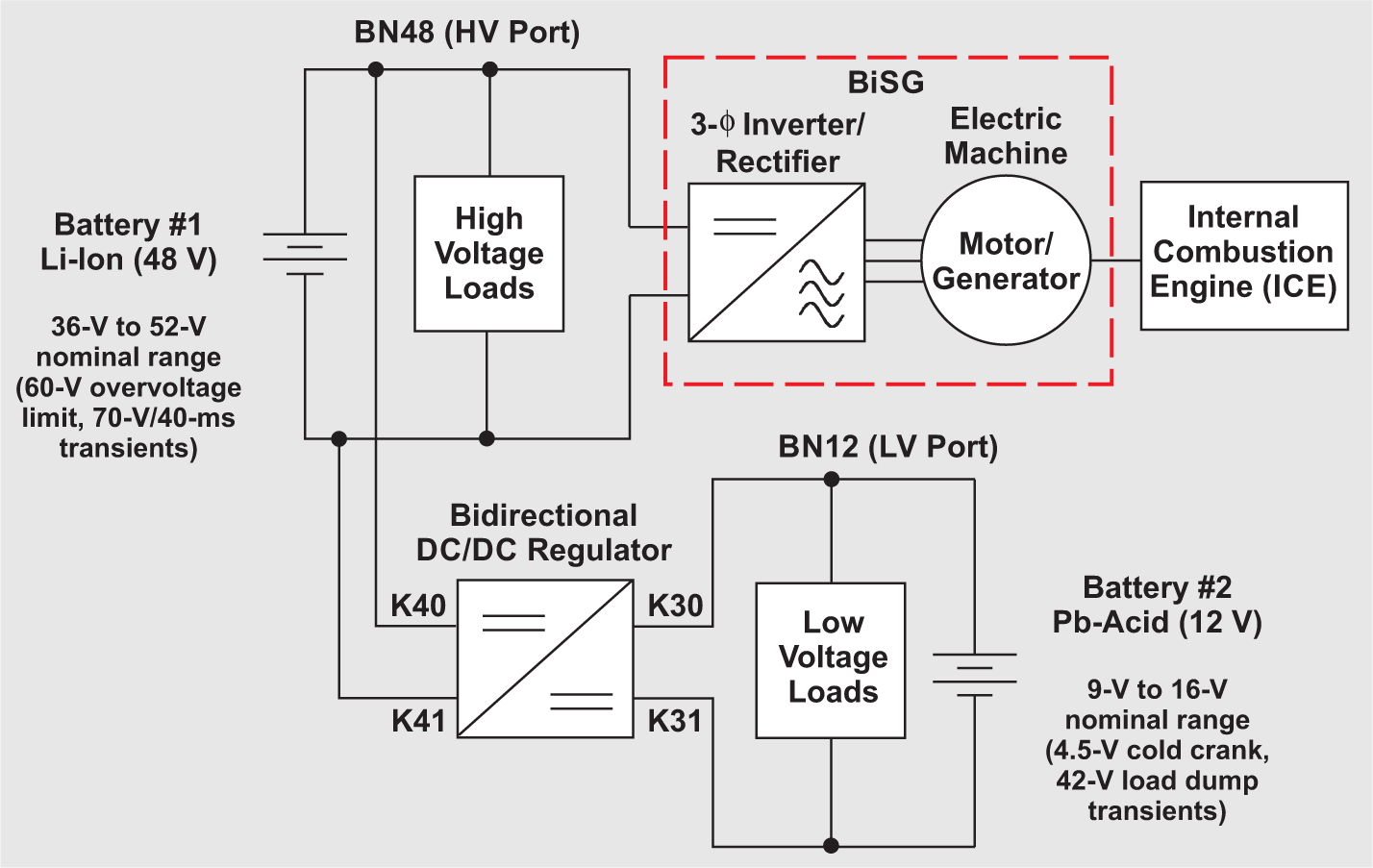SLYT791A may 2020 – may 2020 LM25180 , LM25180-Q1 , LM25183 , LM25183-Q1 , LM25184 , LM25184-Q1 , LM5170-Q1 , LM5180 , LM5180-Q1 , LM5181 , LM5181-Q1 , UCC20225A-Q1
1 Introduction
With the growing power demands of automotive systems, the increasingly strict government mandates for green-house gas emissions, and the conversion from mechanical components to electrical functions for reduced size and weight, the traditional 12-V automotive lead-acid battery has reached its usable power limit.[1, 2] To address this power limitation, automakers are developing a dual-voltage electrical platform that combines a smaller 12-V battery (for compatibility with existing systems) with a 48-V lithiumion battery pack that runs high power loads that includes:
- Powertrain—electric supercharging and regenerative braking.
- Chassis/safety—active roll stabilization and automated driving systems such as radar, camera, LIDAR and ultrasonic sensor systems.
This dual-bus architecture, as presented in Figure 1, provides a pathway to improve the performance of conventional internal combustion engine (ICE) gasoline or diesel vehicles with less of the cost-weight penalty incurred by installing a full hybrid drivetrain.[3, 4] This mild-hybrid electric vehicle (mHEV) architecture involves a relatively unobtrusive electrification of the powertrain. Also, with steady-state voltages less than 60 V, the system is not designated as “high voltage.”
As a result, an mHEV system requires:
- Much less effort in terms of insulation protection.
- Electrical components that are smaller and have a lower incremental cost.
- A more compact design, given the lower clearance spacing between individual components compared to a solution with high-voltage hybridization.
As depicted in Figure 1, a belt-integrated starter-generator (BiSG) delivers recuperated energy to the 48-V board net (BN48) and battery. This configuration also enables some level of torque assist through belt coupling to the engine’s front-end accessory drive. This is known as a P0 configuration.[5,6 ] Other topologies are designated as P1, P2, P3 or P4, where the electric machine may couple to the crankshaft, transmission or rear axle drive.
A current-controlled buck/boost regulator (plus safety switches)[2, 7] provides bidirectional power transfer capability between the BN12 (12-V) and BN48 (48-V) ports in Figure 1, which enables both batteries to simultaneously supply power if needed. The basic half-bridge switching cell of the regulator is scalable to meet higher current demands by supporting multiple phases connected in parallel. Note that there is a common ground for low- and high-voltage systems, and the ground terminals are attached via physically separate grounding bolts/ connections.[3, 4]
 Figure 1 Simplified
Example of a mHEV Dual-battery System
Figure 1 Simplified
Example of a mHEV Dual-battery SystemThis article focuses on the isolated supply that powers the signal path and control circuits on the 48-V side. The primary-side regulated (PSR) flyback converter family as described offers simplicity, versatility, small solution size, low noise, high reliability and low bill-of-materials cost.